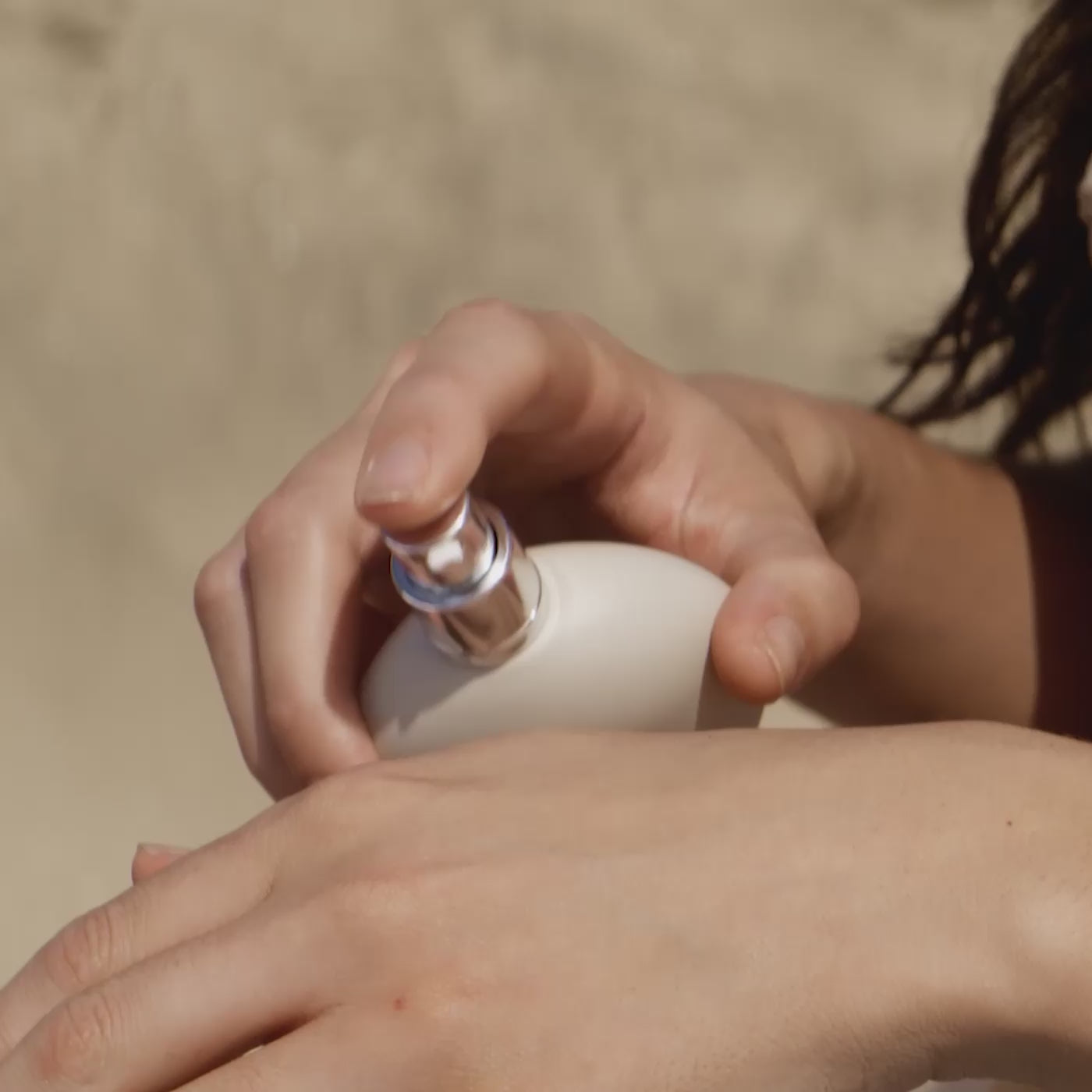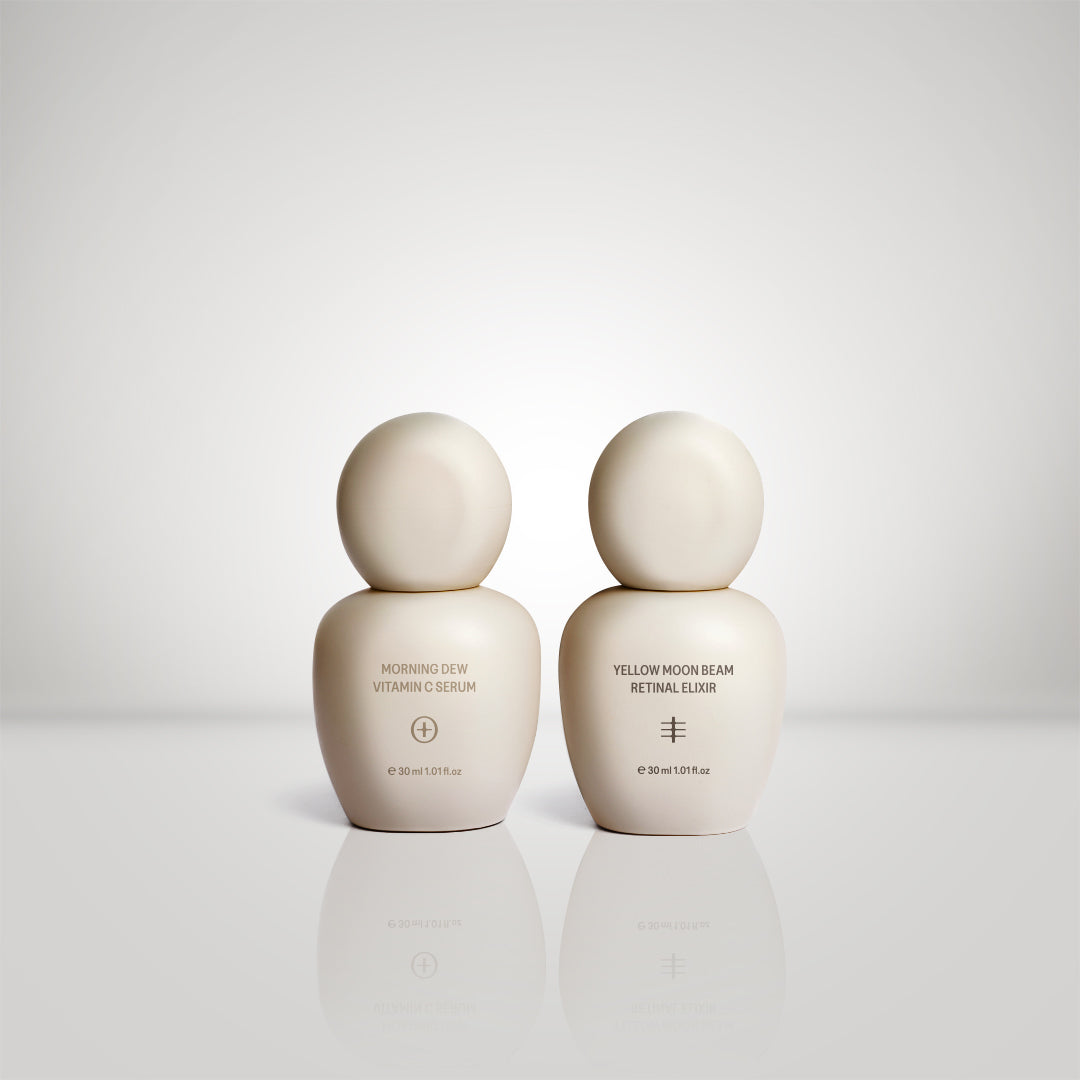








Sun Milk Drops Tinted SPF50
We're petitioning the government to make all SPF products in New Zealand free of GST. Until change is made, we're removing GST from all our SPF products.
Ultra-lightweight skin tint with mineral SPF for an invisible finish
What it does
Finally, a mineral lightweight sunscreen that defends against UVA, UVB, pollution, blue light, and infrared - while smoothing, brightening, and prepping skin for makeup. The peach-tinted formula blends seamlessly into all skin ... Read More
What it does
Finally, a mineral lightweight sunscreen that defends against UVA, UVB, pollution, blue light, and infrared - while smoothing, brightening, and prepping skin for makeup. The peach-tinted formula blends seamlessly into all skin tones, delivering an invisible, radiant glow without clogging pores.
Who it's for
All skin tones and types, including sensitive skin.
Details
Non-comedogenic. Fragrance-free and safe for sensitive skin. Reef safe. 40-minute water resistance.
Sun Milk Drops has been independently tested and complies with the joint AU/NZ standard 2604. Our test data data shows the SPF using ISO 24444 and UVA using ISO 24443.
Benefits
How it works
RAAIE's innovative Age Defence Technology works alongside non-nano zinc oxide for immediate broad-spectrum protection. Forms a physical shield on the skin to defend against environmental stressors and premature aging.
Awards
CLINICAL TESTING
Sun Milk Drops has been independently tested and meets the requirements of the joint AU/NZ Standard 2604. Our test data confirms an SPF50 rating, determined using ISO 24444, an internationally recognized standard for evaluating the Sun Protection Factor (SPF) of sunscreen products through in vivo testing. This ensures effective protection against UVB radiation, which causes sunburn and contributes to skin damage.
Additionally, the product has been tested using ISO 24443, the international standard for assessing broad-spectrum UVA protection. Sun Milk Drops also carries a UVA rating of PA+++, indicating strong protection against UVA rays that contribute to skin aging and long-term damage.
Quick Buy
Key Ingredients
Zinc Oxide
Mineral SPF that offers broad-spectrum UVA/UVB protection.
Iron Oxides
Defends against infrared light while evening out skin tone.
Polymer Matrix
Forms a breathable layer to prevent penetration of harmful pollutants.
Niacinamide
Supports the lipid barrier, improves texture, and minimizes pores.
Bisabolol
Chamomile-derived ingredient that soothes inflammation and boosts antioxidants.
Water, Zinc Oxide, C12-15 Alkyl Benzoate, Butyloctyl Salicylate, Isododecane, Lauryl PEG-8 Dimethicone, Polymethylsilsesquioxane, Octyldodecyl Neopentanoate, Propanediol, Caprylyl Methicone Dimethicone, Niacinamide, Lauryl PEG-1 Tris(Trimethylsiloxy)silylethyl Dimethicone, Trilaureth-4 Phosphate, Dimethiconol/ Propylsilsesquioxane/ Silicate Crosspolymer, Sodium Chloride, Phenoxyethanol, Bisabolol, Iron Oxides, Caprylyl Glycol, Allantoin, Ethylhexylglycerin, Hexylene Glycol, PEG-10, Tetrasodium Glutamate Diacetate, Triethoxycaprylylsilane, Sodium Hydroxide.

From Our Founder
Science behind the formulation
Frequently Asked Questions
Wearing a face SPF every day is key to healthy – and healthy-looking — skin.
A good sunscreen blocks the harmful effects of the sun’s UVA and UVB rays, which wreak havoc on the health of our skin and its cells, leading to decreased collagen and elasticity, fine lines, pigmentation, and an increased risk of skin cancer if an SPF is not used.
Think of it like a sponge and a shield. Chemical sunscreens act like a sponge and ABSORB UV light. Whereas physical sunscreens act more like a shield and DEFLECT the sun's rays (that’s why you sometimes hear them being referred to as a physical sunscreen).
Chemical sunscreens are detected in the bloodstream just 2 hours after
application, and many of the ingredients used are harmful to our coral reefs.
So we always prefer a mineral option. But mineral SPFs have traditionally been sticky and greasy, quick to clog pores, and prone to imparting a grey hue over darker skin tones. RAAIE’s Sun Milk Drops have solved this with revolutionary new technology to make an ultra lightweight mineral sunscreen.
80-90% of extrinsic aging (the signs we can see like wrinkles, dullness, sagging and pigmentation) are not caused by “aging” or time, they are caused by exposure to UV rays. Imagine if you could look 80-90% younger in 20 years’ time? And that’s just aesthetics.
Living in New Zealand, we are exposed to 40% higher UV radiation than similar latitudes in North America, which is why there is such a high incidence of skin cancer (it is the most common cancer affecting New Zealanders).
Studies show that wrinkles and sagging can appear 20 years earlier in women in the Southern hemisphere, compared to our Northern hemisphere sisters.
This sun damage accelerates signs of ageing like wrinkles, rough, dull skin, brown spots, red veins and sagging.
We all need to be wearing sunscreen Every. Single. Day. Even the cloudy days. Even when we are inside (yes, UV rays can can penetrate windows to reach the skin). And we also need to re-apply throughout the day to get the correct protection.
Sunscreens should be "broad-spectrum”, meaning they have UVA and UVB protection. Rays that come from the sun fall into a number of different wavelengths. The SPF on the bottle mainly gives us information about UVB, which is the wavelength of light which causes burning and is responsible for skin cancers. We know that other wavelengths of light, particularly UVA, are detrimental to the skin, causing ageing and wrinkling.
15, 25, 30, 50... Wherever you shop sunscreen, there will always be a number following 'SPF' on each label. SPF or 'sun protection factor’ tells us how much longer we can stay out in the sun without burning, compared to our natural protection.
Dermatologists recommend using a sunscreen with an SPF of at least 30, which blocks 97% of the sun's UVB rays. Higher-number SPFs block slightly more of the sun's UVB rays, but no sunscreen can block 100% of the sun's UVB rays (that’s why it’s important to use an antioxidant serum underneath your SPF, which can scavenge UV rays that sneak through your sunscreen).
It is also important to remember that high-number SPFs last the same amount of time as low-number SPFs. A high-number SPF does not allow you to spend additional time outdoors without reapplication. As many individuals only apply about 50% of the amount of sunscreen needed to achieve the amount of SPF on the label, application of high-SPF sunscreens help to compensate for this under-application. Sunscreens should be reapplied approximately every two hours when outdoors, even on cloudy days, and after swimming or sweating, according to the directions on the bottle.
It’s a mineral sunscreen that’s silky smooth and absorbs quickly for an invisible finish. It has a soft peach tint leaves all skin tones with a lit-from-within glow, and primes skin for makeup without clogging your pores.
The high protection SPF50+ is designed for our harsh New Zealand sun, delivering broad spectrum protection with non-nano zinc oxide, shielding
against not only UVA and UVB rays, but other skin damaging aggressors such
as infrared radiation, pollution and digital blue light.
Everyone should use sunscreen with an SPF of 30 or higher.
People with darker skin have more melanin to absorb harmful UV rays, but that doesn't mean dark skin is immune to damage caused by the sun.
Photodamage in people with darker skin tones leads to sagging of the skin, loss of volume in the face, and hyperpigmentation. While people with lighter skin tones tend to see fine lines and wrinkles show up first, darker skin tones will see changes in pigmentation that lead to dark patches (melasma) and uneven skin tone as a result of sun damage. People who have darker skin—and the slight protection that extra melanin provides—might be tempted to skimp. But New Zealand has one of the highest incidence rates of melanoma in the world, and a broad spectrum SPF of 30 or more is important for all skin tones.


